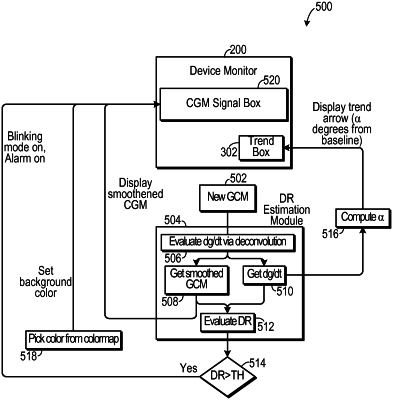| CPC A61B 5/7275 (2013.01) [A61B 5/14532 (2013.01); A61B 5/743 (2013.01); A61B 5/746 (2013.01); G16H 50/30 (2018.01); A61B 5/7405 (2013.01); A61B 5/7455 (2013.01)] | 19 Claims |

|
1. A system for alerting a patient of hypoglycemia and/or hyperglycemia risk, the system comprising:
(a) a continuous glucose monitoring (CGM) device configured to periodically perform glucose measurements for the patient, thereby generating a series of glucose values;
(b) one or more circuitries configured to:
determine a signal to noise ratio (SNR) associated with the periodic glucose measurements;
upon determining that the SNR is at a first SNR level, evaluate, using a first algorithm, a differential change in glucose value over time (dg/dt) based on the series of glucose values;
upon determining that the SNR is at a second SNR level, evaluate, using a second algorithm, the differential change in glucose value over time (dg/dt) based on the series of glucose values, wherein the first SNR level is lower than the second SNR level;
generate a smoothed glucose value that is indicative of the series of glucose values;
estimate a dynamic risk based on the smoothed glucose value and dg/dt;
compare the dynamic risk to a predetermined threshold; and
generate a display representative of the smoothed glucose value and a perceptible alarm when the dynamic risk is greater than the predetermined threshold.
|